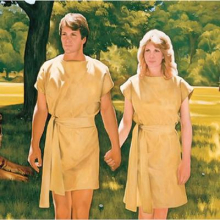The Dark Side of Henry Ford and Charles Lindbergh: A Compelling Historical Exposé (2004)
AtlantisEmpire
Published on Sep 20, 2021
Henry Ford (July 30, 1863 – April 7, 1947) was an American industrialist, the founder of the Ford Motor Company, and the sponsor of the development of the assembly line technique of mass production.
Although Ford did not invent the automobile or the assembly line,[1] he developed and manufactured the first automobile that many middle class Americans could afford. In doing so, Ford converted the automobile from an expensive curiosity into a practical conveyance that would profoundly impact the landscape of the 20th Century. His introduction of the Model T automobile revolutionized transportation and American industry. As the owner of the Ford Motor Company, he became one of the richest and best-known people in the world. He is credited with "Fordism": mass production of inexpensive goods coupled with high wages for workers. Ford had a global vision, with consumerism as the key to peace. His intense commitment to systematically lowering costs resulted in many technical and business innovations, including a franchise system that put dealerships throughout most of North America and in major cities on six continents. Ford left most of his vast wealth to the Ford Foundation and arranged for his family to control the company permanently.
https://en.wikipedia.org/wiki/Henry_Ford
The 1942 MGM picture Keeper of the Flame (Katharine Hepburn, Spencer Tracy) features Hepburn as the widow of Robert V. Forrest, a "Lindbergh-like" national hero.[211]
In the motion picture The Spirit of St. Louis, directed by Billy Wilder and released in 1957, Lindbergh was played by James Stewart, an admirer of Lindbergh and himself an aviator who had flown bombing missions in World War II.[212] Stewart's performance as a man half his age was not well received, and the film was a commercial failure.[213]
Lindbergh was portrayed by actor Jonathan Frakes in episode 10 of the television series Voyagers!, "An Arrow Pointing East".[214]
Lindbergh has been the subject of numerous documentary films, including Charles A. Lindbergh (1927), a UK documentary by De Forest Phonofilm; 40,000 Miles with Lindbergh (1928) featuring Lindbergh himself; and The American Experienceâ€â€”‌Lindbergh: The Shocking, Turbulent Life of America's Lone Eagle (1988).
Within days of the flight, dozens of Tin Pan Alley publishers rushed a variety of popular songs into print celebrating Lindbergh and the Spirit of St. Louis including "Lindbergh (The Eagle of the U.S.A.)" by Howard Johnson and Al Sherman, and "Lucky Lindy" by L. Wolfe Gilbert and Abel Baer. In the two-year period following Lindbergh's flight, the U.S. Copyright Office recorded three hundred applications for Lindbergh songs.[218][219] Tony Randall revived "Lucky Lindy" in an album of Jazz Age and Depression-era songs that he recorded entitled Vo Vo De Oh Doe (1967).[220]
In 1929, Bertolt Brecht wrote a musical called Der Lindberghflug (The Lindbergh Flight) with music by Kurt Weill and Paul Hindemith. Because of Lindbergh's apparent Nazi sympathies, in 1950 Brecht removed all direct references to Lindbergh and renamed the piece Der Ozeanflug (The Ocean Flight).[221]
In 2016, as part of his series of scores based around historical events, Adam Young released a score based around The Spirit of St. Louis's flight.
https://en.wikipedia.org/wiki/Charles_Lindbergh










